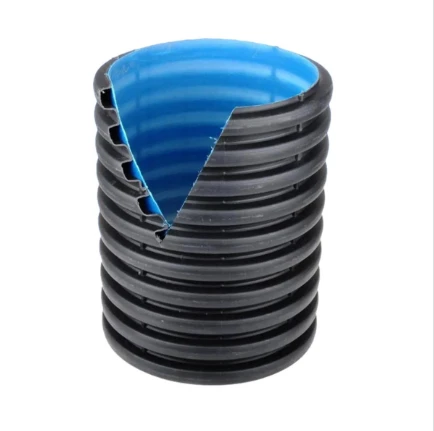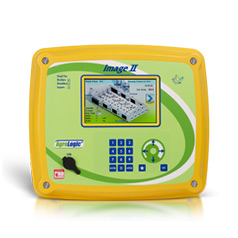Jul . 05, 2025 07:16 Back to list
High-Quality UPVC Drain Pipes Durable HDPE Drain Pipes & More Reliable Drainage Solutions
- Introduction to upvc drain pipes
: Importance and Market Overview - Material Science: What Sets upvc and HDPE Drain Pipes Apart?
- Technical Advantages: Performance, Longevity, and Installation
- Market Comparison: Manufacturers, Pricing, and Regional Availability
- Tailored Solutions: Customization and Project-Based Applications
- Case Studies: Real-World Usage Scenarios for Drain Pipes
- Conclusion: Maximizing Implementation with upvc drain pipes

(upvc drain pipes)
Introduction to upvc drain pipes: The Backbone of Modern Drainage
Efficient drainage systems are fundamental to the health and infrastructure of any urban or industrial setting. Over recent decades, upvc drain pipes have emerged as a preferred solution for water management due to their versatility, durability, and cost efficiency. According to the International Water Association, global demand for quality piping solutions, especially in countries undergoing rapid urbanization, has fueled a steady annual growth rate of 6.1% in the market for thermoplastic pipes since 2015. UPVC (Unplasticized Polyvinyl Chloride) and HDPE (High-Density Polyethylene) drain pipes are the leading players, with upvc drain pipes holding a predominant market share in both residential and commercial developments. Critical to their widespread adoption is the balance between performance expectations and tight regulatory standards for environmental safety.
Beyond regulatory compliance, the selection of drain pipes extends to concerns about lifecycle value, maintenance, and adaptability. To appreciate the current landscape, it is essential to dissect their technical attributes and commercial performance, and how these influence the choices made by contractors, civil engineers, and facility managers worldwide.
Material Science: What Sets upvc and HDPE Drain Pipes Apart?
The core distinction between upvc and HDPE drain pipes lies in their chemical composition and the resultant physical properties. UPVC is renowned for its rigid, non-plasticized structure, making it inherently resistant to corrosion, chemical attack, and biological degradation. Its smooth internal surface minimizes frictional losses, promoting efficient water flow rates.
Conversely, HDPE drain pipes are crafted from high-density polyethylene, offering remarkable flexibility, high impact strength, and excellent resistance to abrasion. This enables HDPE pipes to tolerate ground shifts and vibrations, making them suitable for areas with unstable soil profiles. According to technical data from global suppliers, upvc pipes typically have a tensile strength of 55 MPa, while HDPE pipes range between 31–50 MPa. However, HDPE's elongation at break is up to 800%, dwarfing upvc’s maximum of 80%.
Both pipe types are non-toxic and suitable for potable water applications, yet their selection often pivots on project-specific requirements such as soil conditions, budget, and installation complexity. For instance, while upvc pipes are preferred for rigid installations within concrete structures, HDPE pipes shine in trenchless, horizontal directional drilling projects.
Technical Advantages: Performance, Longevity, and Installation
Performance metrics remain at the heart of choosing appropriate drain pipes. According to a 2023 survey of municipal water projects, upvc drain pipes are typically rated for over 50 years of continuous use with minimal performance degradation. The jointing technology for upvc—primarily solvent cement welding—ensures leak-proof connections, while HDPE pipes utilize heat fusion or electrofusion, giving rise to seamless, monolithic lines.
Installation time and complexity have a direct cost implication. UPVC drain pipes, with their lighter weight and simpler joining systems, reduce labor requirements by up to 35% compared to legacy cast iron systems. HDPE’s flexibility allows for coil delivery and less trenching, which is ideal for large-scale or trenchless deployments. Drain pipes from both materials offer lower hydraulic resistance, resulting in higher flow rates and better resilience against clogging.
The following table offers a concise comparison of key attributes between upvc and HDPE drain pipes:
| Feature | upvc drain pipes | HDPE drain pipes |
|---|---|---|
| Density (g/cm³) | 1.38 | 0.95 |
| Tensile Strength (MPa) | 55 | 31–50 |
| Elongation at Break (%) | 80 | 800 |
| Operating Temperature (°C) | 0–60 | -40–60 |
| Resistance to Chemicals | High | High |
| Installation Speed | High | Medium–High |
| Lifespan (Years) | 50+ | 50+ |
The table underscores the nuanced trade-offs and exceptional qualities suited for varied infrastructure objectives.
Market Comparison: Manufacturers, Pricing, and Regional Availability
As the global market for drain pipes evolves, the supply chain is led by a mix of established international brands and emerging manufacturers catering to local regulations and material standards. Leading producers of upvc drain pipes include JM Eagle (USA), Finolex (India), and Wavin (Netherlands), all renowned for extensive certifications and broad product diversification. For HDPE, companies like Uponor and Poly Pipe offer advanced technology solutions.
Pricing varies based on dimensions, wall thickness, and regional logistics. As of Q4 2023, upvc drain pipes with diameters of 110mm cost approximately $2.3–$2.8 per meter in Southeast Asia, while the equivalent HDPE pipes are priced from $2.7–$3.5 per meter. Of note is that shipment costs and local tariffs can significantly affect lead times and price stability.
When choosing a manufacturer, factors such as ISO certifications, customization capabilities, after-sales support, and sustainable production processes are driving purchasing decisions, especially for major infrastructure investments.
Tailored Solutions: Customization and Project-Based Applications
Modern construction sites are rarely served by “one-size-fits-all” piping solutions. There is a growing emphasis on custom-manufactured drain pipes to address project-specific environmental, hydraulic, and regulatory challenges. Manufacturers now offer tailored lengths (up to 6 meters per segment), custom diameters exceeding 300mm for industrial outflows, and specialized wall structures (plain, corrugated) to support unique load requirements.
Specific projects, such as high-rise commercial buildings, demand upvc drain pipes with higher fire resistance and acoustic insulation, while chemical processing plants often require additional UV stabilization and chemical barrier coatings for pipes exposed to harsh substances. Project managers can further specify jointing techniques—such as push-fit sockets or rubber-ring sealed joints—optimizing both installation speed and operational integrity.
The consultative approach of today’s leading manufacturers is reflected in integrated support services: from BIM modeling for precise planning, to on-site technical assistance, and post-installation quality validation, guaranteeing that customized solutions meet optimal lifecycle expectations and regulatory mandates.
Case Studies: Real-World Usage Scenarios for Drain Pipes
In practice, successful drainage infrastructure is defined by robust performance under real-world conditions. Here are three typical application scenarios where upvc and HDPE drain pipes drive operational excellence:
- Urban Residential Development, New Delhi, India: In 2022, a 2000-unit housing project utilized upvc drain pipes over a 17 km network for wastewater management. Post-commissioning audits reported a 23% reduction in maintenance calls compared to legacy concrete pipes.
- Stormwater Management, Berlin, Germany: The hybrid integration of HDPE and upvc pipes enabled a 12% project cost saving while achieving full compliance with the city’s flood mitigation standards—demonstrated by 99.9% hydraulic flow efficiency during peak storms.
- Industrial Processing Hub, São Paulo, Brazil: For aggressive chemical effluent, HDPE drain pipes were selected. Over a 7-year observation period, the solution demonstrated zero failures in chemical barrier integrity and required only routine inspections, ensuring uninterrupted plant operation.
These cases collectively affirm how informed pipe selection and proper engineering ensure resilient, low-maintenance, and long-lasting drainage systems under diverse conditions.
Conclusion: Maximizing Infrastructure Value with upvc drain pipes
Selecting the right upvc drain pipes unlocks significant performance and long-term value for both private and public sector infrastructure. By blending technical strengths with market intelligence and bespoke engineering, stakeholders can create high-efficiency water management networks at optimal total cost of ownership. upvc drain pipes deliver scalable, sustainable solutions that meet the ever-evolving demands of urban growth, industrial safety, and environmental stewardship. This ensures not just compliance, but true future-proofing of critical infrastructure.

(upvc drain pipes)
FAQS on upvc drain pipes
Q: What are UPVC drain pipes?
A: UPVC drain pipes are unplasticized polyvinyl chloride pipes used for drainage systems. They are known for their durability, chemical resistance, and low maintenance. These pipes are commonly used in residential and commercial buildings.Q: How do UPVC drain pipes differ from HDPE drain pipes?
A: UPVC drain pipes are rigid, lightweight, and resistant to most chemicals, while HDPE drain pipes are more flexible and better suited for underground installations. Both types are popular for different drainage applications. HDPE is often preferred in areas prone to ground movement.Q: What are the main benefits of using UPVC drain pipes?
A: UPVC drain pipes are corrosion-resistant, easy to install, and offer excellent flow properties. They are affordable and have a long service life. These features make them ideal for drain pipe systems.Q: Can UPVC, HDPE, and other drain pipes be used outdoors?
A: Yes, both UPVC and HDPE drain pipes can be used outdoors for waste water and storm drainage. However, UPVC pipes should be protected from prolonged UV exposure. HDPE drain pipes are more UV resistant and flexible for underground use.Q: Are UPVC drain pipes eco-friendly compared to other drain pipe materials?
A: UPVC drain pipes are recyclable and have a lower environmental impact during production compared to some metal pipes. However, HDPE drain pipes are generally considered more environmentally friendly due to their longer lifespan and recyclability. Both types are commonly used as sustainable drain pipe options.-
32mm HDPE Pipes in Coil: Flexible & Durable Water Supply
NewsAug.19,2025
-
Flexible 32mm HDPE Pipes in Coil - Durable & Easy Install
NewsAug.18,2025
-
HDPE Sprinkler Pipe Manufacturers - Quality & Durable Solutions
NewsAug.17,2025
-
Durable DN100 PVC Well Casing Pipes for Reliable Water Supply
NewsAug.16,2025
-
HORON 25mm PPR Plumbing Pipes: Durable, Leak-Proof Water Systems
NewsAug.15,2025
-
Durable UPVC Column Pipes for Submersible Pumps | Efficient Water Flow
NewsAug.14,2025

